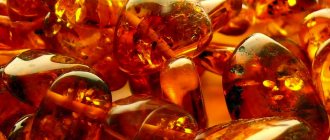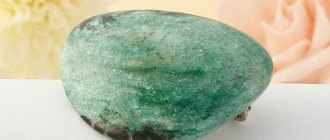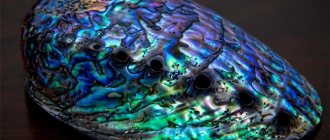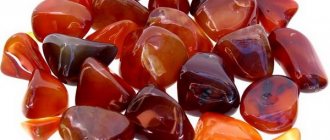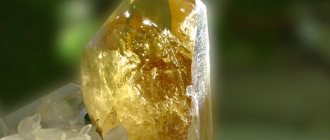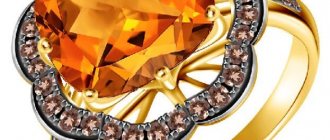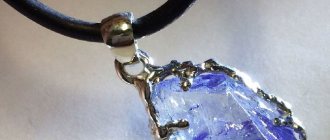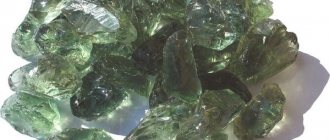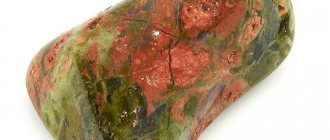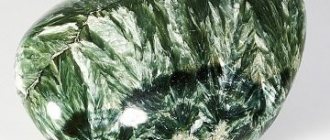Many beautiful lines are written where there is a mention of a wonderful mineral. A crystal that gives hope to those who long for happiness and the belief that dreams can come true.
The ornamental gem has been known since ancient times, this is confirmed by the lines written by Omar Khayyam: “Owner of turquoise, harnesses and horses, we’ll see you in ten days.”
Turquoise stone: magical properties, who is suitable, zodiac sign
Turquoise is a stone familiar to many people. It has long been called “the stone of luck” or “the stone that brings good luck.” The interesting thing is that its color shades can vary, from gray to green. This stone has long been credited with many unique properties. These properties include both magical and healing abilities of the stone.
Even in the old days, it was read that contemplating turquoise during the day relieves a person of depression and bad mood.
From some studied and proven facts, it is worth knowing that frequent observation of the stone improves vision . This property is associated with the bright shade of the stone. In addition, direct contact with the stone on the human body has a beneficial effect on the functioning of the cardiovascular system. That is why it is recommended to wear turquoise in earrings and pendants (closer to the heart).
Psychologists say that the bright color of the stone helps a person feel fear as little as possible and not become emotionally overstrained . It is believed that turquoise is a remedy for overwork .
turquoise beads
Turquoise also has a huge number of magical properties:
- Turquoise (but only natural) helps a person always be in a good mood
- People wearing turquoise are distinguished by wealth and financial well-being
- Turquoise gives its owner good health and longevity, prosperity and joy of life
- It is believed that turquoise can reconcile even malicious enemies and extinguish any anger
It is interesting to know that a stone, when in close connection with its owner, is even capable of changing its hue in order to warn the “owner” of impending problems. In the Middle Ages, turquoise was especially valued by women, because this stone, in their opinion, could help them in “matters of the heart.” To do this, ladies sewed a pebble into the clothes of their beloved man. A turquoise gift to a lover was considered a symbol of fidelity and family happiness.
From other observations of the stone, it should be noted that turquoise has a positive effect on human intuition. The owner of turquoise is more courageous and happier in life than other people. This happens because this stone has relatively strong positive energy. The energy of the stone changes depending on its color. For example, sky blue turquoise is protection from evil , which means it is stronger than all other shades.
Interesting fact: During the process of birth of a stone in nature, as well as during its maturation, the stone changes its color and its energy. A stone is “born” gray, “grows up” blue and “ripens” green. Green turquoise is considered the weakest in energy and practically a “dying” stone. Green turquoise is suitable only for mature people who no longer strive to achieve any goals, but simply spend time relaxing.
reticulated turquoise
Healing properties of the stone:
- Turquoise is useful to wear for those people who often suffer from nervous tension and insomnia . In such cases, jewelry made from silver will become extremely relevant. Silver absorbs negative energy, and turquoise gives positive energy.
- Turquoise on the chest treats the heart and diseases of the circulatory system: varicose veins, thrombosis.
- Also, turquoise in pendants and bracelets helps to get rid of peptic ulcers and any diseases that affect the liver.
- It is believed that turquoise framed in gold will improve a person’s immunity
Important to know: If you wore turquoise and after a while you noticed that the stone had darkened, this is a “signal” that you should see a doctor for a health examination.
turquoise - gemstone
Variety
“The eye is turquoise, the waves are turquoise, only a tear, only a tear hides the eyes in the frozen seas” - Emilia Stock colorfully describes in her poems the shades characteristic of the stone. All shades of blue are included in the turquoise color scheme. Varieties of the mineral are sky blue, bluish blue, bluish green or pale green tones.
There is an assumption that the color of turquoise may indicate the age of the gem. An old mineral becomes green in color, in maturity the stone becomes a rich blue color, and a young crystal has a light blue hue. Perhaps one color or another is characteristic of its deposit.
A very interesting fact is that the color of turquoise changes with increasing temperature. By heating the mineral to 290–350°C, it loses moisture and loses color. A blue crystal becomes a blue-gray color, a green gem becomes a gray-green color, and a dark gray stone becomes a dark chocolate tone.
What does turquoise look like, what color is the stone, its meaning?
In some countries (Tibet), turquoise is still considered not a stone, but a real divine essence. Ancient Persian beliefs, for example, stated that turquoise is the result of the decomposition of the bones of those people who died of love. Due to the strong energy of the stone, it has always been recommended to be worn by travelers for good luck on the road, lonely people to find love, and the sick to recover.
Visually, you can distinguish several types of turquoise:
- Blue-blue
- Blue
- Greenish blue
- Green
- Pale blue
- Pale green
- Mesh turquoise
- Lace turquoise
- Turquoise with a yellowish tint
- Gray-green turquoise
- Olive turquoise
- Brown turquoise
- White turquoise (chalky)
natural turquoise stone
It is interesting to know that the mesh pattern that may be present on the surface of turquoise is formed due to thin veins. These veins are composed of manganese oxide and iron oxide. Their formation is also influenced by the carbonaceous shale found in the rock. If turquoise has many inclusions, it is usually called “matrix” or “lace”. Only light-colored turquoise can be like this.
5.2) SYNTHETIC IMITATIONS (synthetic turquoise)
The most common type of modern counterfeit of turquoise is synthetic imitations. Today, even gold jewelry is dominated by a uniform, perfect blue synthetic turquoise (with black veins on the surface or inside the stone, or a pure color with whitish inclusions). 5.2.1) The most ancient artificial substitute for turquoise is glass
It was already used in Ancient Egypt 4 thousand years ago (blue glass beads painted with cobalt were found in the tomb of Tutankhamun (1350 BC)). Copper and cobalt were used as dyes in these glasses, and later, to give a look closer to natural turquoise, zinc oxide. These glasses have a density of 2.8-3.3 g/cm3 and a refractive index of 1.6. When examining them through a magnifying glass, it is clear that this is not turquoise, but glass containing numerous gas bubbles. Among the imitations of turquoise, ceramics are used, including earthenware, porcelain and enamels. Enamels that imitate turquoise are slightly discolored silicate glass mixed with a mixture of metal oxides. The study of these substances makes it possible to distinguish them from turquoise by their rougher, shagreen surface appearance, lower density and glassy luster.
5.2.2) “Viennese turquoise”
Another artificial imitation of turquoise, which has become widespread in Europe since the 19th century. and is a heat-treated and compressed mixture of malachite, aluminum hydroxide and phosphoric acid (according to other sources: obtained by pressing precipitated phosphate, tinted with copper oleate). “Vienna turquoise” has a relatively low refractive index (1.45) and, when heated in the flame of a gas burner, sinteres into black glass, while natural turquoise turns into a dark brown powder when heated.
5.2.3) Turquoise called “Neolithic”
From copper phosphate and aluminum hydroxide (synthesized in Germany in 1957). In such synthetic turquoise a bright greenish-yellow color appears, which is uncharacteristic of natural turquoise. When heated, it turns black rather than cracking. This substance with a refractive index of 1.55 is a mixture of beyerite and copper phosphate with dark veins of the “matrix”, obtained due to the admixture of amorphous iron compounds. Almost Neolithic is identical to Viennese turquoise.
“Vienna turquoise” and Neolithic under the influence of hydrochloric acid acquire a bright greenish-yellow color, never seen in natural turquoise. 5.2.4) PLASTIC - the cheapest imitation of turquoise
Cabochons are cast from it, sometimes with a characteristic spider web pattern. But the coloring of plastic products is too perfect. They are lighter, softer, non-porous and without a waxy sheen.
Recently, turquoise-like products have been added to the number of imitations, having the composition of turquoise, but differing from it in structure and impurities. They were called "sinto" and "adko" after the manufacturers who produced them and "Adko Products".
Turquoise stone – white, blue, green, red, purple: photo
The structure of the stone is crystalline, with veins . Sometimes turquoise has growths, sinter masses or layers. Natural turquoise is not transparent . The stone has a pleasant, sometimes waxy , sometimes matte shine . The density of natural stone is very high.
The color of the stone most often corresponds to its name - turquoise, but it often has many completely different shades. The color of turquoise differs depending on the deposit and type of stone. For example, Arizona turquoise (mined in the USA, Arizona) is considered the best and most expensive. This stone comes in a variety of colors and often has black inclusions and even patterns.
blue turquoise
blue turquoise
green turquoise
gray, blue and white turquoise
brown and other types of turquoise
Physicochemical characteristics
Turquoise is a blue, white or green gem with shades. Color is created by copper or iron. If there is more copper, green shades are obtained, if iron, blue shades are obtained.
Structurally, it is not a crystal, but an agglomerate. Semi-precious or ornamental stone.
| Property | Description |
| Formula | CuAl6(OH)2[PO4]4H2O |
| Color | Blue, light blue, blue-green, green, often with brown spots. |
| Shine | Wax |
| Transparency | Opaque |
| Hardness | 5-6 |
| Cleavage | Perfect/imperfect |
| Kink | Conchoidal, uneven. |
| Density | 2.6-2.8 g/cm³ |
Jewelry with turquoise for men made of gold and silver: rings, rings, signets
Turquoise should not be considered only as a feminine stone. Increasingly, modern jewelry companies and manufacturers are creating men's jewelry complemented with turquoise. Correctly chosen jewelry will not only improve health and lift your spirits , but will also help ensure that good luck accompanies a person.
Men's jewelry with turquoise:
Silver ring with turquoise
Bauble with turquoise
Men's ring with turquoise chips
Silver ring with turquoise
Where is it used?
The only sphere of use of stone is the kingdom of beauty. It is classified as jewelry or decorative.
Jewelry
Turquoise is a universal gem; there is a suitable shade for men and women of any age.
The fragile gemstone is difficult to process, so the impact is minimal. It is turned into a cabochon for rings, rings, earrings, brooches, or left in fancy shapes for beads, bracelets, and pendants.
Bracelet with turquoise
Decor
The mineral is used to decorate tableware, watches, and pens. Small plastics are made from it. The most popular products made from turquoise are scarab beetles. They are most often counterfeited.
Price
The price depends on the properties and purity of the stone. The most expensive is a dense blue specimen without “mesh” or veins, up to $30 per carat (or $150 per gram). Porosity, spotting, patterning or yellowing will reduce the value. The smallest bead costs at least 40 rubles.
Turquoise is a stone of love: how to charm turquoise into love?
Turquoise has long been considered a stone of love. For this reason, it was worn by both women and men. Lonely people believed that turquoise could give them a meeting with their loved one . Family people wore turquoise in order to preserve and protect their family happiness .
To date, the stone has not changed its magical properties. It is typical to be worn by those people who do not need drastic changes, but want to find their calm happiness of strong family relationships. It is recommended to choose the turquoise that suits your zodiac sign.
A turquoise gift is considered a sign of a strong love relationship. A husband or wife gives their significant other turquoise as a recognition of fidelity and devotion.
Turquoise is a stone of love.
You can charm the stone into love and enhance its energy using a spell:
Love spell
Who should not wear a turquoise stone?
Turquoise is a stone that suits many. But it also has some “incompatibility”. It is believed that evil people should not wear turquoise. They should completely avoid any, even the smallest stone inserts. It is believed that the stone will either not help or harm people with a “bad character”.
Also, turquoise should not be worn by women who really like to apply cosmetics to their face and body. We are talking about excessive quantities. This should not be done because the stone, in contact with chemical components, can deteriorate. The same thing happens upon contact with oils (creams, lotions) and alcohol (perfumes).
Modern soap can also negatively affect the beauty of the stone. Therefore, before taking a shower or bath, as well as before washing your hands, it is necessary to remove the jewelry.
Why can't Leos wear turquoise?
Despite the fact that turquoise is a very auspicious stone , it should absolutely not be worn by people with the horoscope sign of Leo. It is precisely because of its unique properties that turquoise can ruin Leo’s health. This stone can even weaken the nervous system of a person of this zodiac sign and the worst thing is not to improve, but to worsen well-being . In some cases, turquoise is the reason for Leo's financial collapse.
Other negative influences of turquoise on Leo:
- Significant deterioration in the functioning of the reproductive system, reduces the activity of Lviv
- Turquoise worsens Leo's ability to work
- Contributes to the fact that Leos “suffer” failures in the professional sphere
Leos should not wear turquoise
Why does turquoise change color?
The word “turquoise” in translation sounds like “to win” (from ancient Persian), and not “blue”. This stone is a sedimentary rock that has many different shades. Turquoise is one of the few stones that tend to change their color depending on external factors.
Turquoise can change color due to:
- heating
- Exposure to chemical elements
If the stone is subjected to heat treatment (stays in the sun, in the oven, in hot water for a long time), it becomes a nondescript and unsightly muddy green color. If the stone is affected by any chemicals (from cosmetics, household chemicals, or substances produced by the human body in case of illness), it acquires yellowish spots and spots.
Turquoise changes color
History of the mineral
The first finds of the gem date back to the 4th–5th millennia BC. On a peninsula washed by the Red Sea, located on the border between Asia and Africa, deposits of a mineral of amazing beauty were discovered. Ancient literature tells how thousands of slaves were sent to the mines in the Sinai Peninsula to extract natural stone.
Not far from the deposit was the large port city of Suez, where caravans with the extracted treasures were heading. Blue turquoise was discovered in Iran, which accounts for a third of the world's harvest. The Iranian treasury has significantly dried up; if until recently up to 300 tons of the best mineral were extracted from the depths, today no more than 30 tons are mined.
The formation of a gem occurs as a result of a combination of physical and chemical processes that transform rock in the upper layers of the earth's crust under the influence of the atmosphere and hydrosphere into a beautiful mineral. The transformation of turquoise is possible as a result of a low-temperature hydrothermal process.
Secondary changes in copper deposits can also lead to the appearance of a gem deposit.
Turquoise stone has magical properties according to zodiac signs for men and women
The main advice of astrologers is to choose blue turquoise. Blue turquoise has strong positive energy. You should also focus on your zodiac sign when choosing jewelry with turquoise:
- Blue turquoise suits Sagittarius, Capricorn, Libra
- Green turquoise suits Scorpios, as well as Taurus
- White turquoise is very harmonious with Aries, Virgo and Pisces
- Gray turquoise corresponds to Scorpios, Aquarius
- Brown turquoise suits Cancer, Taurus, Libra
Turquoise according to zodiac signs
Location and production
The reserves of the sources have noticeably dried up - at the moment, no more than 30 tons are extracted from the mines, instead of 340 thousand tons.
Production mainly comes from:
- USA;
- Mexico;
- Chile;
- Peru;
- Iran;
- Australia;
- Tanzania;
- Uzbekistan;
- Africa.
In Asian countries there are other varieties of turquoise - green, brown, white, with various color inclusions. The mineral is found in all possible shades of blue. But the first place belongs to the USA - the most stone is mined there, in Arizona, Colorado and California.
Turquoise in the breed
Turquoise stone: how to distinguish from a fake?
Modern jewelry manufacturers have learned to fake natural turquoise. Natural turquoise is very expensive, rare and valuable. Therefore, making its imitation is much easier and cheaper.
Minerals and other materials similar to stone are often fakes:
- Varisci
- Howlit
- Chrysocolla
- Artificial turquoise
- Plastic
- Ceramics
- Porcelain
- Colored glass
- Bone
In order not to be deceived by the manufacturer, you should know some ways to identify a fake:
- A fake leaves a colored mark on a wet wipe, a natural one does not.
- The surface of natural stone is porous
- There cannot be cracks or any bubbles, swelling or swelling on the surface of the original turquoise
- If you are buying turquoise beads or a bracelet, the color of the stone outside and inside the hole should not differ
- If you heat a needle and bring the edge to turquoise, the plastic will immediately melt, the bone will begin to smell bad after this procedure
- If you start scratching turquoise with a needle, the fake will leave scratch marks, but the real one will not deteriorate.
How to recognize natural turquoise?
Turquoise stone: what to wear with it?
Turquoise jewelry suits blue-eyed people very much. When choosing a stone, you should focus on the color of your skin: dark-skinned people should buy turquoise in gold , and people with white skin should buy turquoise in silver trim.
It is best to have two turquoise jewelry on your body:
- Necklace – bracelet
- Necklace - ring
- Ring - earrings
- Ring – bracelet
- Ring - pendant
- Bracelet - earrings and so on.
Additions of shawls and scarves in turquoise shades, as well as the pursuit of turquoise makeup, will be extremely relevant.
How and with what to wear turquoise?
Favorable time to buy
The 10th and 24th lunar days are considered favorable times for buying turquoise.
Used Books
- Stories about gems: Ed. 2nd. Alexander Evgenievich Fersman. Science, 1974
- G. Smith. Gems. Publishing house "Mir" Moscow 1980. Turquoise. page 470
- Turquoise // Encyclopedic Dictionary of Brockhaus and Efron: in 86 volumes (82 volumes and 4 additional). - St. Petersburg, 1890-1907.
- Decorative varieties of colored stone of the USSR/Under the general title. ed. E. Kievlenko. M.: Nedra, 1989.
- Webster R. Gems: Their Sources, Descriptions and Identification (5th ed.), pp. 254-263. Butterworth-Heinemann, UK
5 / 5 ( 19 votes)
How to care for turquoise?
Natural stone requires careful care in order to delight the owner with its beauty for as long as possible and carry only positive energy. Turquoise is very hygroscopic. This means that it must be protected from such influences:
- Heat and overheating
- Ultrasound
- Chemical exposure
- Acid
- Abrasives
Protect turquoise from chemical elements found in soap, shampoo, detergents, and perfumes. Rub turquoise with a dry cloth or piece of suede for shine and shine.

